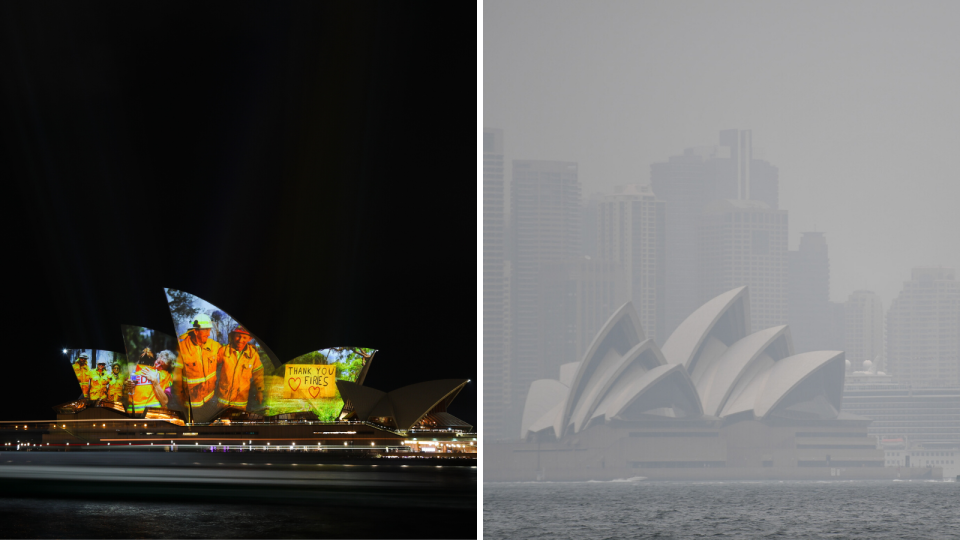Australia's much-needed economic pick-up has been choked by smoke and fire

The run of published economic data since the start of the year has been pretty good.
It confirms the economy ended 2019 with a dose of positive momentum. This is good news and it set the scene for 2020 being a year of solid growth. Indeed, the economy was on track to record 3 per cent GDP growth for the first time in half a decade.
Alas. This positive outlook appears to have been damaged, at least in the near term, as the bush fires and smoke impacted economic activity.
Also read: Bushfires boosting the chances of another interest rate cut
More from The Kouk: What's ahead for the Australian economy and markets in 2020
More from The Kouk: The real test for Scott Morrison in 2020
The fires are an unprecedented catastrophe that risk derailing the economic pick-up for at least a few months.
As a result of the fires, we know a huge number of consumers stayed at home, avoiding inhaling rancid smoke, rather than venturing to the shops and spending. People linked to the tourism industry in the bush fire areas have seen mass cancellations during what is usually a peak school holiday summer season.
Business have closed or curtailed operations due to the smoke, especially those involving outdoor work. Sporting events, race meetings and a myriad of other pastimes have been cancelled and the activity associated with them has been lost to the economy.
The hit to the economy from this will be big and will likely show up in the data released over the next few months.
How did the economy end 2019?
The data flow over the past two weeks or so showed a solid rise in retail spending, a lift in new residential building approvals, a further rise in house prices, a large international trade surplus and growth in personal lending. Motor vehicle sales also appear to be near a turning point. There was a little downside news with the ANZ job ads series falling.
This overall picture would have been of some comfort to the Reserve Bank and Treasury – at least the economy was swinging up, not down, before the negative shock of the bushfires and smoke emerged.
The RBA and official interest rates
That said, the next RBA Board meeting, just three weeks from now, will seriously canvas a further interest rate cut, a move that will take the official cash rate to a fresh record low of 0.5 per cent. An interest rate cut is ‘insurance’ against the negative effects of the fires, which will slice around 0.25 percentage points from March quarter GDP growth.
An interest rate cut in February will provide some stimulus to the economy with improving business and householder cash flows and will keep the Australian dollar below 70 US cents, which will support and already buoyant export sector.
And the interest rate cut will also be responsible given the near certainty of another miss on the 2 to 3 per cent inflation target, which will be confirmed in the week before the February RBA meeting when the December quarter data are released.
The highly influential Melbourne Institute monthly inflation gauge confirmed annual inflation tracking around 1.5 per cent in December.
If the official inflation result confirms this, the RBA rate cut will not only be insurance against the negative effects of the fires, but also in reaction to the on-going chronically low inflation rate.
The fire effect is yet to be seen in hard data
The impact of the fires to the economy at the moment covers a few anecdotes.
The ANZ measure of consumer confidence, which is measured weekly, shows the confidence tracking near 5 years lows in the last two weeks, a reading which points to downside risks to retail spending in January.
Once the fires are out and the rebuilding task reaches full tilt, there will be a positive impact on economic growth.
This is likely to be seen from around the middle of 2020, and if there is rain as well and the farm sector also starts to recover from the drought, late 2020 and 2021 should see the economy return to 3 per cent GDP growth, or even a little more.
Make your money work with Yahoo Finance’s daily newsletter. Sign up here and stay on top of the latest money, property and tech news.

 Yahoo Finance
Yahoo Finance 